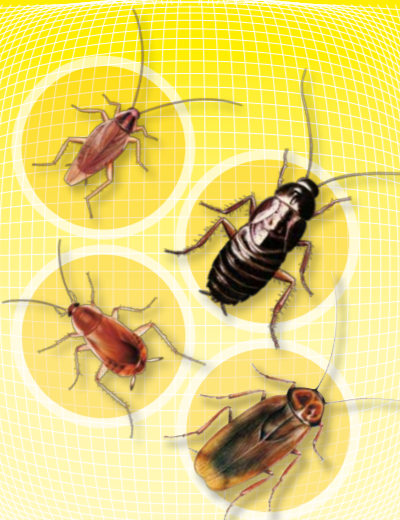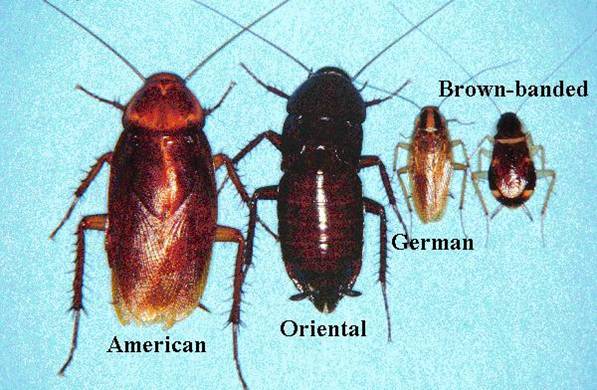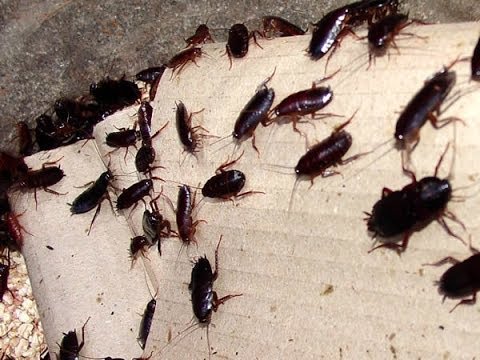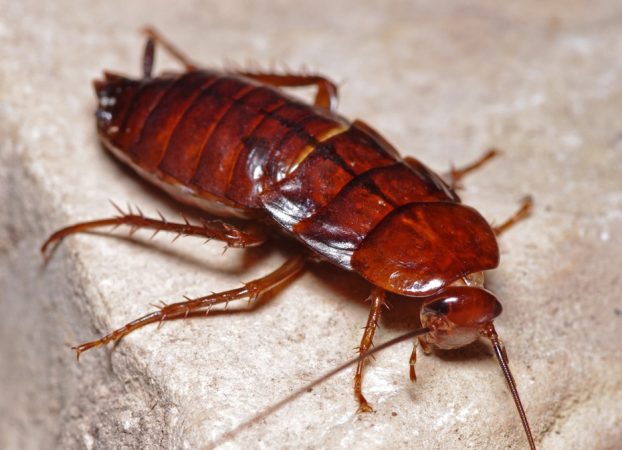Cockroaches
Belonging to the order of the Blattodei, these insects have a more or less oval shape, flattened dorso-ventrally and vary in color from multiple varieties of brown to black. The adults of some species reach a maximum of 1.5-2 cm in length, while others can exceed 8 cm. When they are in the resting position the head is curved down, under the chest, and tends not to be visible. On the head there are a pair of long and threadlike antennae, 2 large eyes and a mouth equipped with a chewing apparatus.The dorsal shield placed on the thorax covers the base of the head and wings. Some species fly to move, others despite having wings are not very suitable for flight, still others are terrified. Both males and females are equipped with large sense organs called "cerci", located in the terminal part of the abdomen. The relevant species in infestations are essentially 4: Blattella germanica, Supella longipalpa (less than 2cm in size), Periplaneta americana. and Blatta orientalis (between 3 and 4cm). The first two species of ocher yellow color, mainly infest environments dedicated to food and domestic distribution. P. americana is characterized by a leather red color and by the presence of wings that completely cover the abdomen in adults; B. orientalis, on the other hand, usually appears darker and in adults the wings do not reach the entire abdomen. These two larger species generally tend to infest underground environments, sewers and basements as well as domestic environments. More rarely, especially in the southern regions of our country, a fifth species, Polyphaga aegyptiaca, can be found, black in color, about 3cm long and with wings longer than the abdomen in the male.
Damage caused
Cockroaches are mechanical vectors of various pathogens for humans (viruses, bacteria, fungi and parasitic worms), whose transmission occurs indirectly through contaminated food; by means of direct contact, or by regurgitation, faeces or saliva.The very important allergological aspect should not be underestimated, which manifests itself through the ingestion of allergens contained in contaminated food or with environmental dust in case of cleaning haunted environments.
How to act
In case of cockroaches in kitchens and other living environments, take the following measures
.- Remove any food that may have been contaminated, fruit, biscuits and anything in the kitchen that was not hermetically sealed
- Clean and disinfect worktops, shelves and drawers where cockroaches can pass
- Carry out a correct management of garbage in bins that must always be closed and covered and a careful conservation of foodstuffs
- Seal the sewer drains and evident interstices present on the paved surface
- If necessary, program insecticide treatments.




